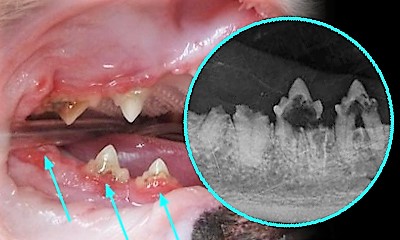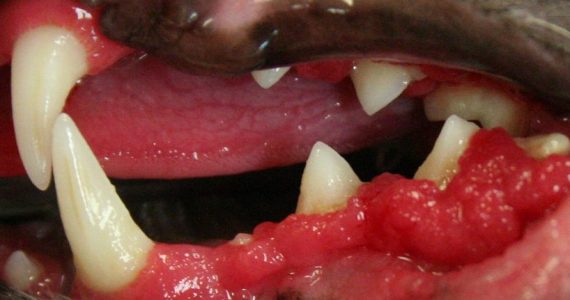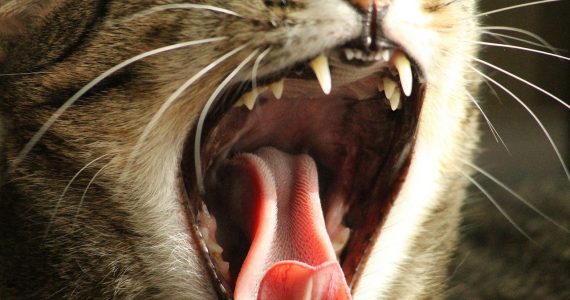Feline dental conditions
Dental disease is very common in our feline friends. Stomatitis and resorptive lesions are two conditions which are unique to their species.
RESORPTIVE LESIONS
Resorptive Lesions are a common feline dental problem. More than half of all cats older than three years old will have at least one tooth affected by resorption.
Tooth resorption is usually found on the outside of the tooth where the gum meets the tooth surface. The lower jaw premolars are the most commonly affected. However any tooth can be affected.
The cause is unknown: an autoimmune response, calicivirus, and metabolic imbalances relating to calcium regulation have been theorised. Commonly the resorption starts at the gum line and progresses, eroding sensitive dentin. No matter how small the holes are they are intensely painful. Signs include increased salivation, oral bleeding, difficulty eating or weight loss. However, cats are good at hiding their pain so most times it is up to the veterinarian to diagnose tooth resorption. Early intervention is essential.
There are five stages of tooth resorption. With stage 1 an enamel defect is present. The lesion is usually minimally sensitive because it has not entered the dentin. In stage 2, the lesion penetrates enamel and dentin. When resorption progresses into the pulp chamber (nerve) stage 3 has occurred. Large amounts of the tooth’s hard structure have been destroyed by stage 4. Stage 5 is when most of the tooth has been resorbed, leaving only a bump covered by gum tissue.
Close examination may reveal a small pink spot on the tooth. This is the gum itself, attempting to fill in the hole. If left untreated the crown of the tooth may break off. Some lesions may only occur below the gum line so won’t be visible to the naked eye.
Dental X rays are very effective at spotting these lesions. Treatment for tooth resorption involves either removal of the entire tooth and roots, or a partial tooth extraction.
STOMATITIS

Stomatitis is another painful condition involving inflammation of the mouth. The appearance of the gums may range from a small red line to very red, enlarged, irregular soft tissue. The clinical signs are loss of appetite, drooling, food dropping, weight loss and lethargy.
Unfortunately the exact cause of this disease is unknown but the immune system reacts excessively and inappropriately to any plaque on the teeth – causing inflammation of the gums.
Dental x-rays are used to rule out inflammation due to resorptive lesions. Medical treatment is usually unsuccessful. Sometimes cleaning and polishing, followed by a course of corticosteroids or even stronger drugs may help; but in severe cases the only remedy is to remove all the teeth except perhaps the incisors and canines.
To have your cat’s teeth checked please contact our friendly team on (08) 8340 0388 or book an appointment online by clicking here.

